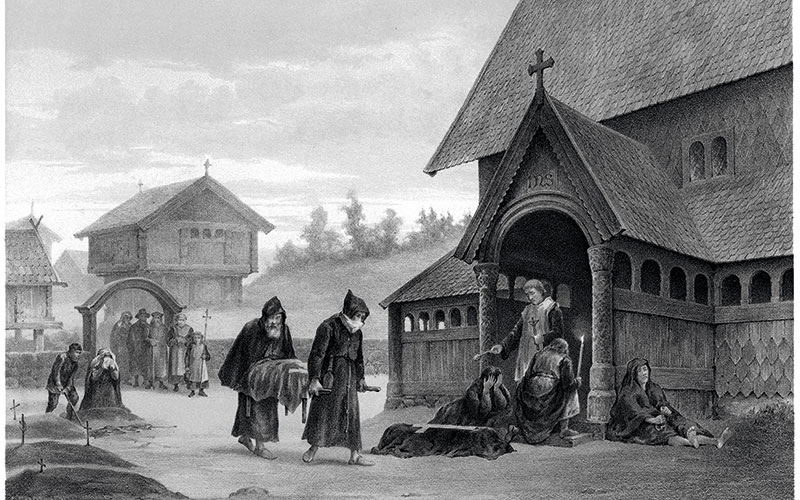The Black Death was the first great pandemic to devastate these shores and, unlike COVID-19, there was a special horror in the fact no-one knew what it was, states writer Jonathan Lovett.

In 1340s England, the Far East seemed a distant, even mythical land. But around 1346, merchants arriving in the ports were telling gruesome tales of whole towns and cities laid to waste by a mysterious illness that had no respect for age or class and which killed its victims in some of the most revolting ways possible.
“It first betrayed itself by the emergence of certain tumours in the groin or the armpits,” wrote the Italian author Giovanni Boccaccio at the time, “some of which grew as large as a common apple, others as an egg…”
“As it (the bubo) grew more solid,” took up his contemporary, Gabriel de Mussi, “its burning heat caused the patients to fall into a putrid fever… in some cases it gave rise to an intolerable stench. In others it brought on vomiting of blood.”
What we now know as bubonic plague began its deadly march along the Silk Road in Asia towards Europe. Not just bubonic, however, but pneumonic and septicaemic plague (all originating from the same source) were heading here in a perfect storm, which was to end up killing between a third and a half of Europe’s population.
In one of the first examples of biological warfare it is thought to have entered Europe via a siege of the Crimean city of Kaffa in 1347. The Mongol army, stricken by plague, began catapulting infected corpses over the city walls at the Genoese inhabitants. The fleeing traders took the disease back with them to Sicily from where the plague devastated Italy, much of mainland Europe and then, in the summer of 1348, it entered England.
Please click here to read the full article
Please click here to read all the Science articles from The Biomedical Scientist




